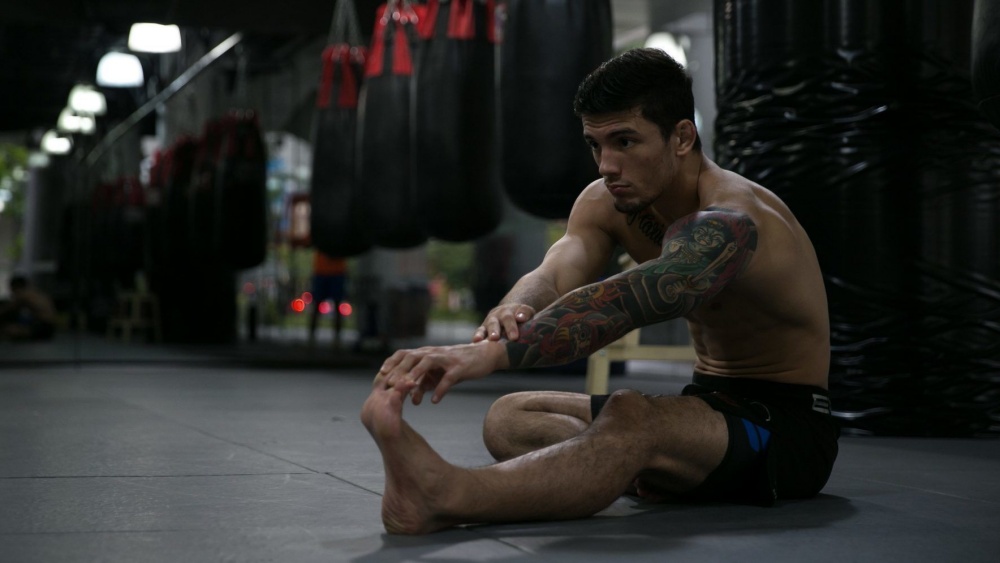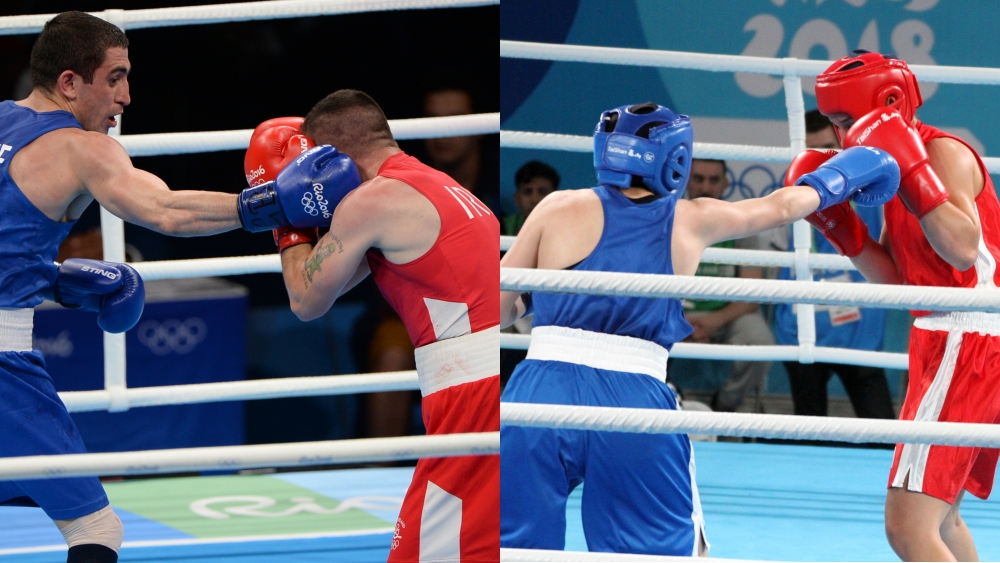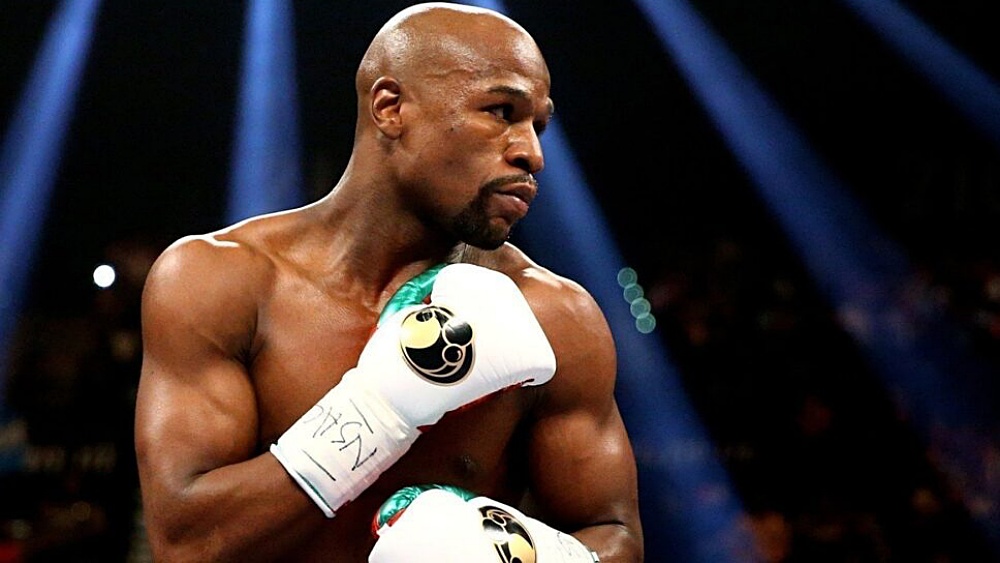Mobility training can make you more effective as a martial artist. Mobility refers to your ability to move your joints in a full range of motion. Your flexibility is also a part of mobility since the muscles surrounding any given joint need to be flexible enough to support its full range of motion.
Martial arts training involves using movements that require a level of mobility. For example, you need a certain level of mobility in your hips and legs to pull off techniques like the triangle choke. Some Brazilian Jiu-Jitsu practitioners are forced to remove that technique from their arsenal due to their limited mobility.
Study most advanced martial artists, and you’ll notice they have a lot more mobility than the average person. From Jean-Claude Van Damme performing standing splits while finishing off villains with kicks to the face to BJJ ace Eddie Bravo working his legs as if they were made of rubber in the rubber guard, high mobility and flexibility are a common theme among decorated martial artists.
Training martial arts helps improve your mobility on its own, but you can speed things up by working on your mobility and flexibility outside the dojo.
Mobility Training 101
Mobility training should not be confused with flexibility training. Flexibility is a part of mobility, but focusing only on it can prevent you from reaching your full potential. Mobility training involves performing exercises that help to increase the range of motions and movements you can perform.
A good mobility training program includes strength, flexibility, and balance training. Improving all these things together gives you optimal results. The goal of these exercises should be to improve your movements, strengthen the muscles around your joints, and increase the range of motion of your joints. Mobility training allows you to weight train more effectively, squat lower, jump higher, run faster, and execute martial arts techniques more efficiently.
Flexibility training, on the other hand, involves lengthening and stretching your muscles. This improves your range of movement, a portion of mobility training.
When a part of your body has less mobility than others, you might compensate for it by overusing other joints and muscles. For example, you will naturally try to balance most of your weight on one knee if the other is injured. This places additional stress on the healthy knee and can lead to it becoming injured as well.
Benefits Of Mobility Training For Martial Artists
Let us take a look at some of the reasons why you shouldn’t neglect mobility training to complement your martial arts classes.
1) Reduces The Risk Of Injury
The more flexible your joints are, the less likely you are to become injured in or out of the dojo. Injuries sometimes occur due to a person’s joints and muscles being pushed past what they are capable of. People with stiff muscles and joints are more prone to such injuries.
We’ve all watched MMA fights when one fighter was caught in what looked to be a tight armbar, yet they managed to escape the submission due to the high mobility of their elbow joints. A person with limited elbow mobility could easily sustain an injury during a similar grappling exchange if they refuse to tap out.
2) It Gives You More Angles To Attack From
Increasing your mobility makes you more effective at executing countless martial arts techniques. For example, throwing a roundhouse kick requires a certain level of mobility in your hips and groin. A person with stiff hips would have a difficult time getting their leg high enough.
You’ll need even more mobility to execute spinning attacks like the spinning heel kick.
3) Improves Posture
Mobility training improves your posture, making your movements more efficient. People who spend most of their time hunched over a desk or hunched over while grappling have an increased risk of developing poor posture.
4) Better Warm-Up
Exercises like running and jogging are great ways to warm-up for martial arts training, but you get more out of mobility training. Mobility training sends blood to the tissues being worked and synovial fluid to the joints being used.
For example, performing hip circles is an effective way to warm up your hips before training. It sends blood to the muscles that control the leg: the external rotators, glutes, and hip flexors. It also lubricates your hips with synovial fluid in preparation for training. Most martial arts require lots of hip movement so add hip circles to your warm-up routine.
Simple Mobility Drills
Now that we’ve gone over why you need mobility training to reach your full potential as a martial artist, let’s go over some simple drills you can incorporate into your training.
- Hip Circles: Motions that involve hip movements make up a considerable portion of many martial arts. To perform a hip opener, stand upright and bring one of your knees to your chest. Make a circle with the knee and move it side to side across your body. Repeat with your other knee. You can also perform hip circles while walking.
- Shoulder Pass-Throughs: This exercise helps to improve your posture. To perform it, stand upright while holding a stick or broom with a wide grip. While keeping your arms straight, lift the stick in front of you and over your head. Try to take it as far back as you can without hyperextending your back. Hold the position for a few seconds and return to the starting position.
- Spiderman Walks: This exercise provides you with multiple benefits as it works multiple joints. To perform the drill, get into a forward lunge position and stretch out your hips for a few seconds. Move your hips back, so you’re now stretching the hamstring of your other leg. Return to the starting position and twist the hand closest to your front foot towards the ceiling. Switch sides and repeat the exercise.
Learn More Drills
Our instructors at Evolve incorporate mobility training as part of our martial arts classes. Feel free to attend one of our complimentary introductory martial arts classes to experience what training with us is like.
Book your complimentary trial class with our World Champions below!
If you have any other questions regarding Evolve MMA and the programs we offer, you can get in touch with our membership executives at the following locations:
Evolve MMA (Far East Square)
26 China Street
Far East Square #01-01
Singapore 049568
Phone: (65) 6536 4525
Evolve MMA (Orchard Central)
181 Orchard Road
#06-01 Orchard Central
Singapore 238896
Phone: (65) 6536 4556
Evolve MMA (KINEX)
11 Tanjong Katong Road
#02-52 KINEX
Singapore 437157
Phone: (65) 6288 2293
Evolve MMA (Clarke Quay Central)
6 Eu Tong Sen Street
#04-18 Clarke Quay Central
Singapore 059817
Phone: (65) 6226 2150




















